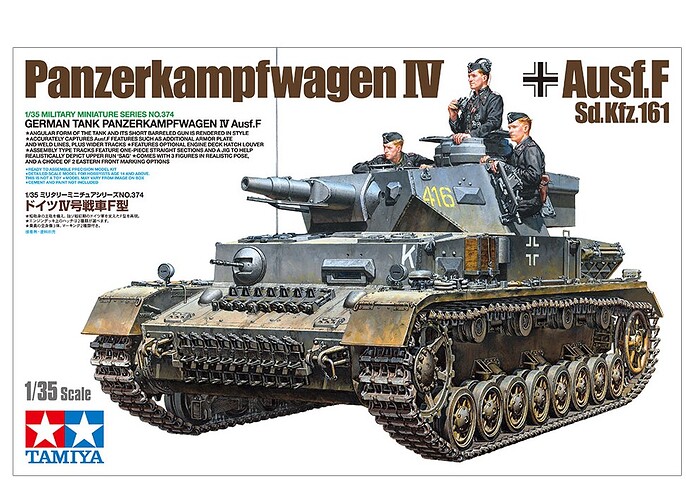Yes StuG III Ausf. E was present ar Stalingrad, part of the 192nd or 197th Sturmgeschütz regiments.
Thank you!
In that case I would go with this kit:
And now I should decide if I buy the tamiya panzer IV or this stug III. What do you think? ![]()
StuG
Pure and simple personal opinion, it just feels as if the StuG would fit better into the composition.
Short and compact.
Which Tamiya Pz IV were you thinking about?
Yes, I too feel like the StuG would be better in this situation. My reasoning is that the StuG would be used for direct infantry support more often than the panzer IV. This is just my uneducated opinion as I do not know much about ww2 vehicles.
I wanted to use this Tamiya kit with the 14th panzer division: https://www.tamiya.com/english/products/35374/index.htm
Ah, Pz IV with a long barrel.
A long barrel might be difficult to aim when closed in by walls and other obstacles in a factory environment. One more reason for a StuG …
Edit: See post by gloch below. Too tired today
Essentially the same gun as the StuG.
I still prefer the StuG ![]()
This version of the PzKpfw IV was the last of the short barreled 75mm cannon tanks. It was built and designed to support infantry, as opposed to the PzKpfw III which was designed to fight tanks (at first the 37mm gun and later versions with 50 mm gun). So this Tamiya model is good for this diorama, or the StuG.III Ausf E also with the short 75mm cannon
Thanks! Very interesting.
Now that has made it even more tough to decide which one to pick ![]()
I guess I will have to look at some reviews and decide by them. I know that the Tamiya is more simple to build but I do not know if the simplicity is at the expence of details. Has anyone built one of them?
Does NOT have rubber band tracks → should be a good and easy build
I also like that the 14th panzer division directly fought in the factory. Guess I will go with the Panzer IV.
I tried making the plastering of the interior walls on spare piece of the foam:
I made it with plasterboard putty. It need a little bit sanding but I think that it looks good. I am just a little bit scared of making even layer of the putty over a large surface. Any ideas on the interior walls?
Smooth plaster up to 2 meters above the floor and then visible bricks??
I did not think about that ![]()
What do you think the transition between plaster and bricks would look like?
Since the plaster is a material added to the bricks it will add thickness to the wall.
Assume that the plaster is 5 to 10 mm thick in real life.
This would result in a straight edge about 5/35 mm thick on your factory wall, 0.14 to 0.28 mm.
Enough to be visible but should not look like a ledge where a cigarette could rest.
Okay, thanks
Shouldn’t there be something to divide the 2 sections?
Shouldn’t be necessary. If the plastered lower section ends high up (you choose the height) on the wall then the edge would be out of the way for everyone.
Say shoulder height for average workers, let the plaster end at 5 or 6 feet above the floor.
The plaster will be still relatively high due to the staircase.
I was thinking that it went from the ground floor.
The staircase would rise above the upper edge of the plaster.
The floor is the work area where things get moved around, the stairs
are just a method of reaching something or to get to some upper floor.
Oh, I see. But will it not be weird that the windows are plastered only halfway through?
But I think that it would create a lot of interest.
The plastered surface had the purpose of being smooth (ease of cleaning, avoid catching objects on the rough surface of bricks and joints, whatever reason)
BUT
it also cost more to put it there so money was saved by only plastering as high
as absolutely needed.
The same principle was applied to architecture. The side of a factory that faced the
“public” was decorated with fancy patterns and structures in the brick laying.
The rear and/or inward sides to court yards et.c. was kept simple and cheap.

